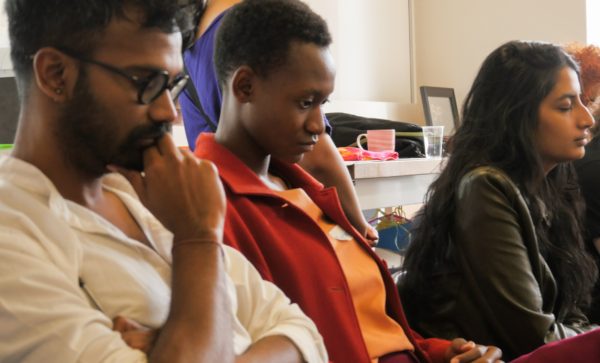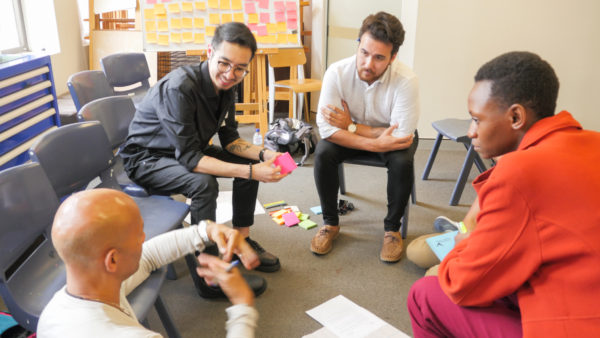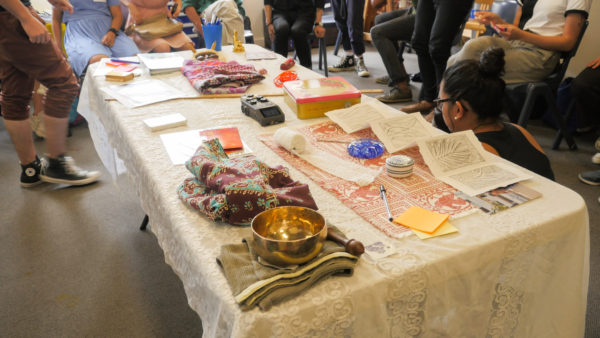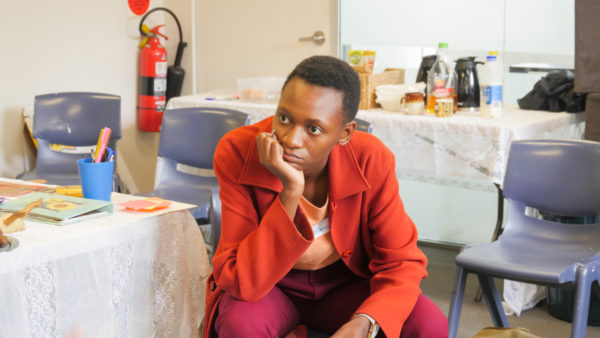
I’ve attended my fair share of diversity “things”. Meetings, symposiums, panels, talks, presentations, think tanks,––even picnics. You name it, there’s probably a diversity equivalent. For those unfamiliar with these rituals, they often start with a hopeful proclamation that “this will be the last”— it never is. Though infused with good intentions and optimistic outlooks, these gatherings have often been critiqued, rightfully so, of highlighting our collective amnesia.
Our societal inability, across all levels, to acknowledge and engage with the work done before us, often leads to a process of reducing, reusing and recycling these trite exercises in dialogue ad nauseam; exercises which rarely translate to action. This lack of follow-through this necessitates another conversation, and the cycle continues. In an attempt to counter this reactionary cycle, Diversity Arts Australia: Australia’s key organisation promoting cultural diversity in the arts, held a workshop titled Stories From the Future, which, in many ways, was a welcome shift.

The present dynamic often stipulates a reactionary course of action. When there’s an over saturation of lip-service, or deliberate counter-progressive decisions are made, the snidely appointed “Diversity Police” are called on to reprimand the powers that be and call them to task with #oscarssowhite, research reports on Theatre’s lack of Diversity, or indictments of the Visual Arts sector’s inability to adequately engage with artists and audiences of colour.
Central to the objective and impact of this cyclical practice is what Toni Morrison refers to as “distraction”.
These, frankly, racist acts not only take opportunity and deny access to so many, but they conscript the creatives and thinkers within those communities to, again, communicate their humanity, to justify their legitimacy to the same people– an elaborate distraction from their own personal and professional growth.

Stories from the Future combated this trap head on, while providing a remedy for our amnesia, with a decided focus on the herstories and experiences of migrant and Culturally and Linguistically Diverse (CALD) artists in the room.
The majority lens was largely discarded, and for a few hours we were encouraged to remain constantly grounded by the footsteps in which we walk, the traditions we are contributing to and the work that preceded us.
This process was greatly aided by Sydney University’s Dr Remy Low and his contemplative practice rooted in active listening. This approach made us acutely aware of our role within the present, placing us in good standing to project, hope and dream into the future. This novel terrain, for individuals often burdened with addressing the barriers of today, enabled us to imagine 2050 from a uniquely divergent perspective where we envisaged a generation that had inherited the creative landscape the present day us had built. We wrote a letter to our current selves, celebrating the achievements we had made in those 30 years.
As we individually took turns to share our letters the underlying hope imbedded in our practice shone through, highlighting the grand leaps we believed had to be made and could be made in order to realise the ideal arts industry of 2050.
Recounts from letters included solutions to global warming, shifted practices that were rooted in renewed understandings from a Treaty with our First Nations peoples, CALD migrants as Heads of State and many more. This drastically shifted the discourse from a reactionary to a proactive stance– with an agenda to best ensure the realities we’d imagined.

A crucial relationship presented itself throughout this process. This was around how intrinsically tied our ability to imagine and dream of a future, is tied to our present day access to stories of our past and our now, stories in which we are depicted.
The cultivation and nurturing of those stories fundamentally grounds us and draws the horizons, the scopes and limitations of our imaginings. When we deny people of their stories, their truth – we rob them of those dreams, we pull those horizons closer.
This fundamental understanding beneath the case for diversity in storytelling demands that diversity expand beyond its present relegation as fodder for scant arts festival programs. It demands structural and systemic change that uproots existing power dynamics and lays down a mandate for tangible change. It calls for us to uproot the case for accurate representation from its present day grossly abstracted frame of reference, and reunite it with its active imperatives.

If there is a single takeaway for participants or readers; it is to actively engage with the intricate web of stories and traditions around us. That it is crucial to the progression of these conversations that the work of those before us is acknowledged and built upon, that we work from a thorough understanding of our herstory.
It is to our detriment to confine these interrogations to a vacuum, where they are divorced from their past, ignorant of their future and detached from their present day imperatives. Likewise, as storytellers, it is our mandate, whether presently represented or not, to not deny others from their ability to envision a future in which they are the protagonist of their own story, to be cognisant of the calls to action we need to meet, the accountability we must demand and the foundations we are building on.
– Creative Lives Feature by Moreblessing Maturure, Interdisciplinary Artist, Creative Director of FOLK Magazine.
Diversity Arts Australia (DARTS) invited participant artists to reflect on the Stories from the Future project, which gathers culturally diverse creatives from across the country to imagine equitable alternative futures for the arts. This project is a partnership between DARTS, the University of Sydney, Refugee Art Project and state partners and receives core support from the Australia Council for the Arts, Create NSW, Inner West Council, City of Parramatta Council and Liverpool City Council.
